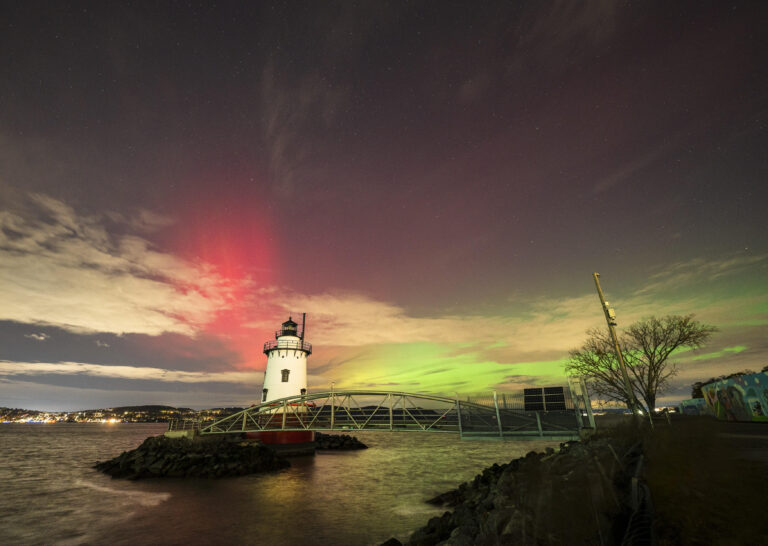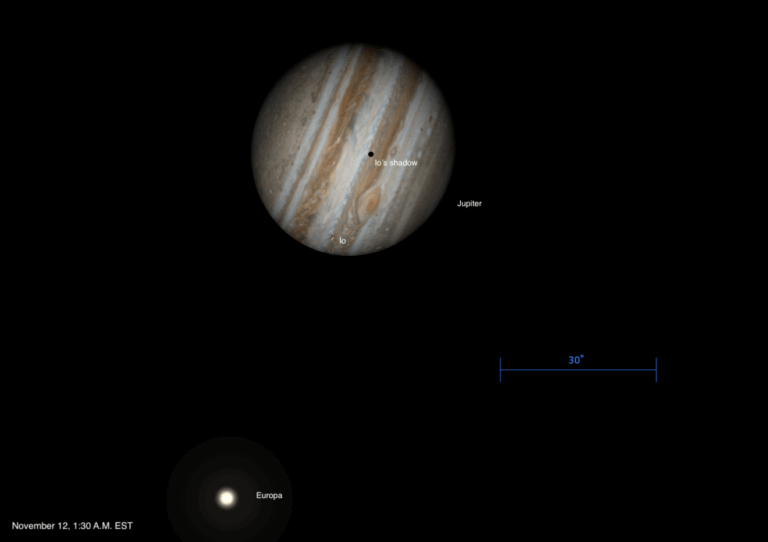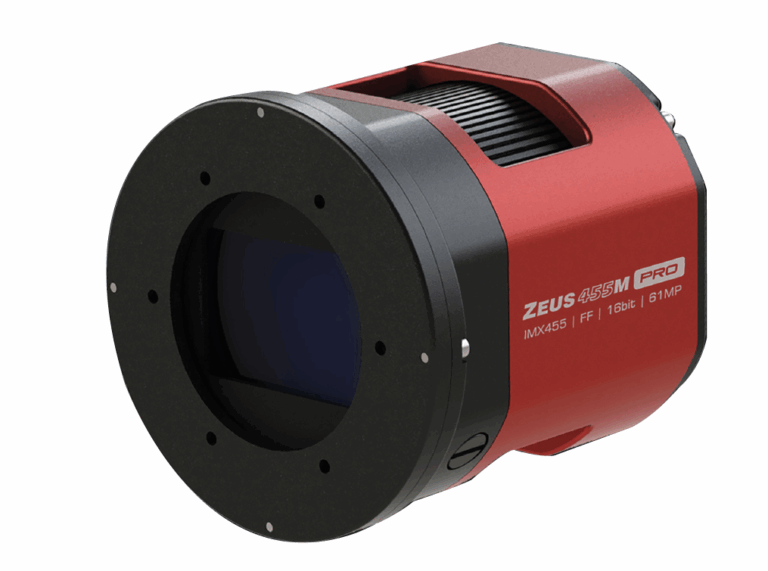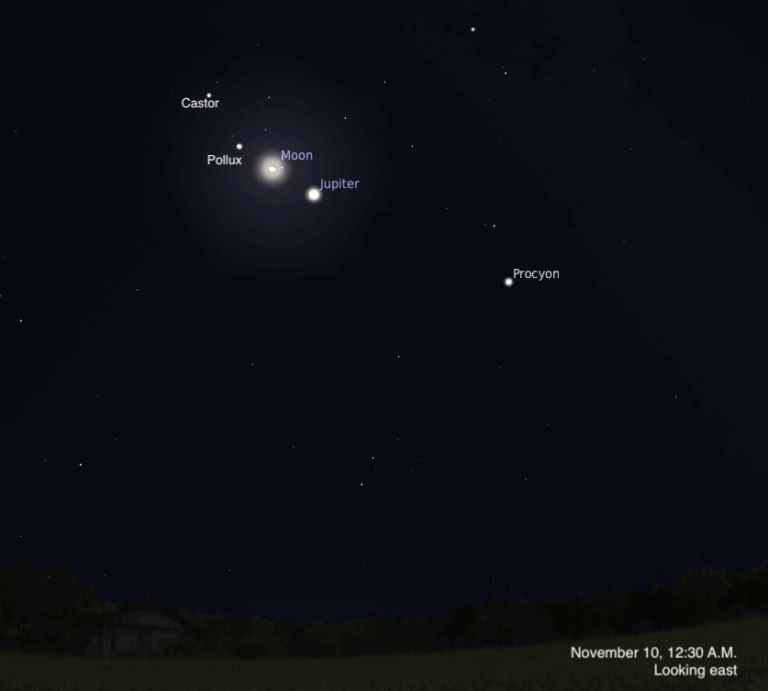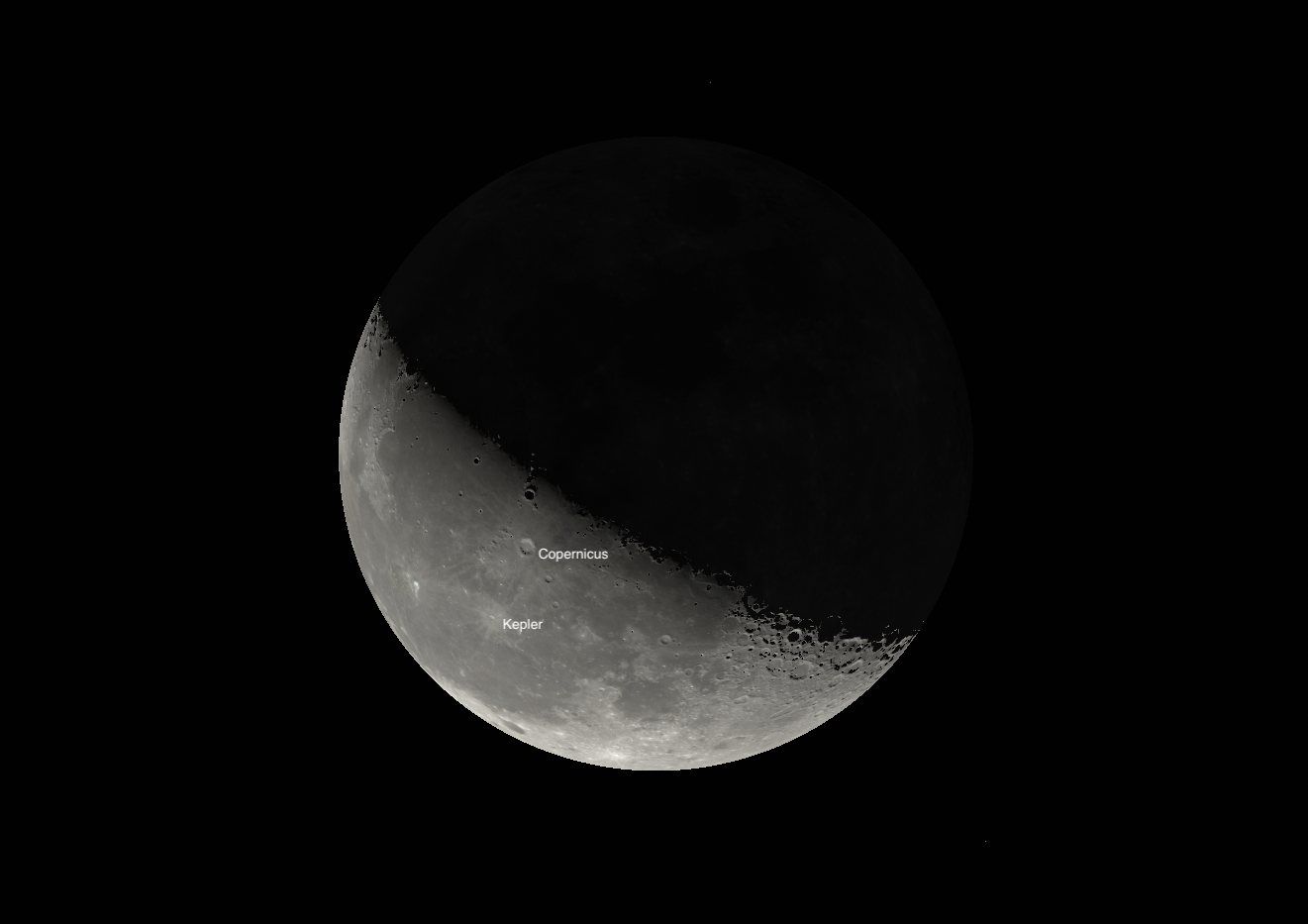
Key Takeaways:
- Early on November 12, the Moon, described as a 38-percent-lit crescent, will be observable rising between Regulus and Denebola within the constellation Leo.
- The Moon's western limb will display Copernicus crater near the terminator, characterized by a brighter eastern rim and muted, though visible, ejecta rays.
- Southeast of Copernicus, the smaller Kepler crater will be discernible, with its rays anticipated to be slightly more prominent and overlapping those of Copernicus.
- A lunar occultation of 4th-magnitude Rho Leonis is projected for specific locations in northern Canada and Alaska, with local astronomical timings provided for relevant events.
Looking for a sky event this week? Check out our full Sky This Week column.
November 12: Catch Mercury and Mars
The Moon lies to the lower left (east) of Regulus in Leo as they rise early this morning in the east shortly after midnight. By 5 A.M. local time, they’ve reached 50° high in the southeast. The Moon appears sandwiched between the Lion’s two brightest stars: Regulus, the Lion’s heart; and Denebola, the Lion’s tail.
Now a 38-percent-lit crescent, the Moon shows off its western limb, while sunset has darkened the rest of the lunar nearside. Visible just beyond the edge of the terminator dividing night and day is the round, well-defined crater Copernicus in the lunar northwest. Some 56 miles (90 kilometers) across, Copernicus’ eastern rim should appear brighter than its western side as the Sun sets over the landscape, illuminating it from the west. The normally easy-to-identify bright rays of ejecta that surround the crater are now muted, but still visible as you scan the area with a telescope.
To Copernicus’ southeast is much smaller Kepler, only about 20 miles (32 km) wide. Its rays should be slightly more visible, overlapping with those of Copernicus in the region between the two craters.
Some locations in northern Canada and Alaska will see the Moon occult 4th-magnitude Rho (ρ) Leonis — check out the International Occultation Timing Association’s webpage for the event for details if you are in these areas.
Sunrise: 6:43 A.M.
Sunset: 4:45 P.M.
Moonrise: 12:14 A.M.
Moonset: 1:43 P.M.
Moon Phase: Waning crescent (31%)
*Times for sunrise, sunset, moonrise, and moonset are given in local time from 40° N 90° W. The Moon’s illumination is given at 10 P.M. local time from the same location.

